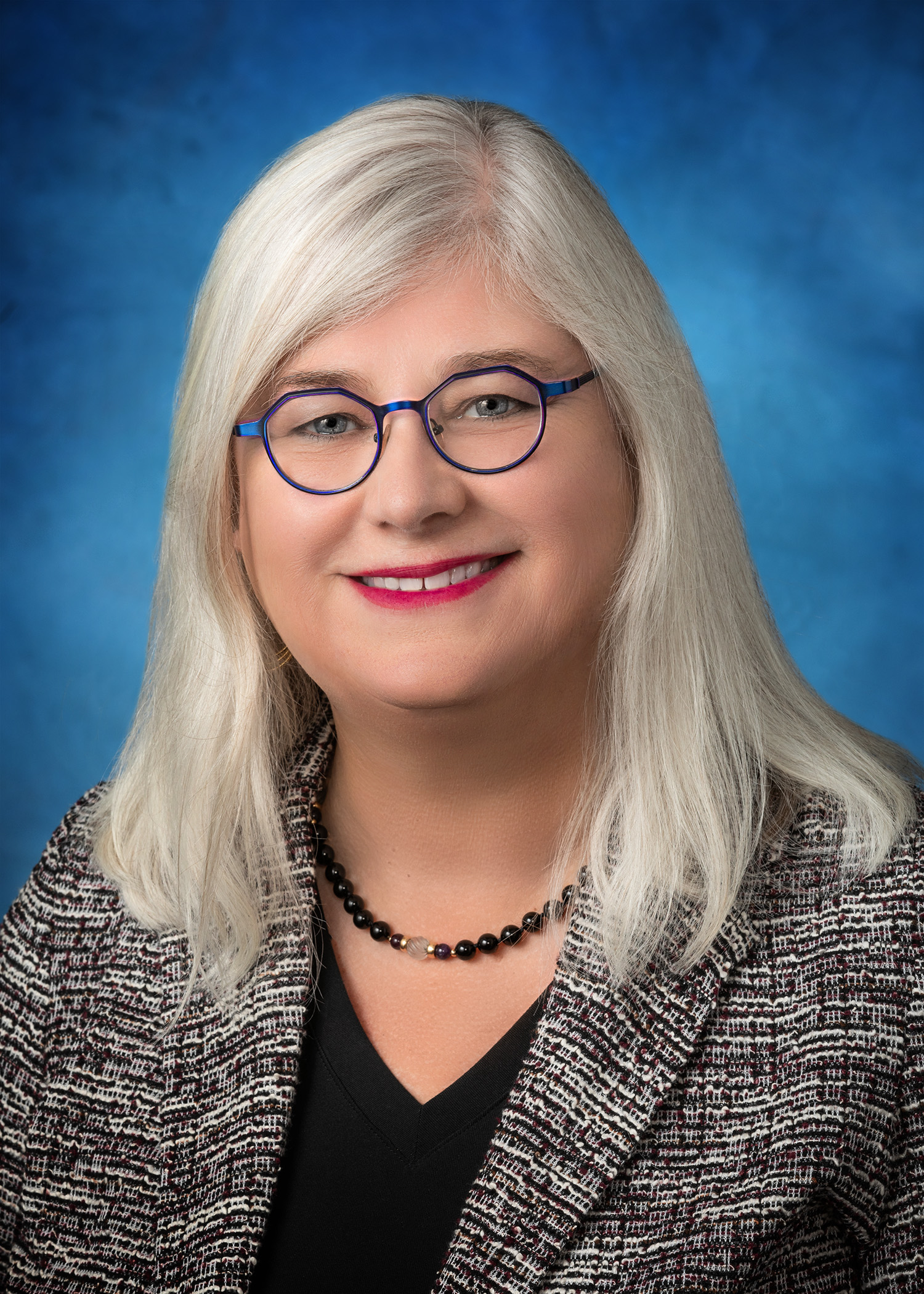by HEATHER M. YOUNG, PH.D., RN, FAAN; BETTY IRENE MOORE SCHOOL OF NURSING, UNIVERSITY OF CALIFORNIA, DAVIS
I could not imagine a better context for a fulfilling career than community based long-term care. Starting as a nursing assistant on the night shift of a nursing home when I was a teenager, I experienced an intricate and rewarding career ladder, to dietitian, nurse, geriatric nurse practitioner, nursing home administrator, assisted living administrator, chief operating officer of a multi-site provider, educator, researcher and professor of nursing. Over the past 45 years, I have turned the prism of home and community-based settings from all these perspectives. I have been driven by my passion to make sure that every older adult can live to full capacity with meaningful connection and the assurance of receiving compassionate and competent care. I have gained experience, insight, and an incredible network of dedicated colleagues.
 I want to contribute to paving the way for so many starting out in their careers, by promoting systems, strategies and policies that support the passion that drives individuals who are called to contribute to the lives of older adults. Our systems are not set up well to do that, starting with ageism and stigma, and perpetuated by lower pay and status, complex regulations, under-resourced environments and work that is physically and emotionally demanding. The time is ripe for new solutions. We are nearing a crisis now, with projected needs for an additional 200,000 direct care workers in California by 2024, and a workforce with fewer than 5 percent of healthcare professionals having expertise in geriatrics. The need is not just about more people, but deep changes that need to occur in preparation and in models of care delivery.
I want to contribute to paving the way for so many starting out in their careers, by promoting systems, strategies and policies that support the passion that drives individuals who are called to contribute to the lives of older adults. Our systems are not set up well to do that, starting with ageism and stigma, and perpetuated by lower pay and status, complex regulations, under-resourced environments and work that is physically and emotionally demanding. The time is ripe for new solutions. We are nearing a crisis now, with projected needs for an additional 200,000 direct care workers in California by 2024, and a workforce with fewer than 5 percent of healthcare professionals having expertise in geriatrics. The need is not just about more people, but deep changes that need to occur in preparation and in models of care delivery.
Two recent opportunities enabled deeper thought about paving the way. As a Commissioner and co-chair of the Aging Sub-Committee of the California Future Healthcare Workforce Commission1 and as a member of the Stakeholder Advisory Committee for the California Master Plan on Aging2, I joined expert colleagues in deliberating about how to advance the long-term care workforce. Several recommendations stand out, including building capacity and career paths, enacting new models of care, and assuring policy supports.
Building capacity and career paths
First, the numbers: older adults need access to qualified careers, across all communities in our state and nation. It is vital that the workforce reflects the diversity of the population as the older population becomes more diverse. This requires strong pipeline and recruitment programs, established career paths, mentorship support and incentives to work with older adults across settings. All health professionals should be prepared with competency in geriatrics, dementia care, palliative care, behavioral health, as well as the ability to work in interdisciplinary teams to deliver person-centered, culturally and linguistically congruent, technology enabled care for older adults and persons with disabilities. Direct care workers need preparation for the complex needs of older adults, to be equipped to communicate well and provide appropriate care. This requires that all education and continuing education programs include these basic competencies, and that programs offer clinical placements to help inspire students and expose them to the possibilities of a career with older adults.
Career ladders play an important role by providing a logical path forward for individuals who want to pursue further preparation and qualification. This involves defining and aligning the requirements for working at each level and within each job description, then mapping the educational requirements to maximize efficiency of progression. For example, many nursing assistants are interested in becoming a Licensed Vocational Nurse (LVN), then a Registered Nurse (RN). These programs can build upon one another to assure smooth transitions between programs without having to repeat content. Model programs have eliminated barriers and eased advancement, resulting in lower costs for students and more timely graduation of RNs.
An often-overlooked human resource is older workers, who can be vibrant contributors to care for older adults. These could be workers from other industries whose positions have been phased out and those seeking post-retirement careers. There are many less physically demanding needs that these workers could fill, including medical translation, peer navigators, outreach calls to reduce social isolation, health coaches, in-home visits, and advocacy.
Enacting new models of care
It is not possible to generate enough people to work in community-based long-term care soon enough – without redesigning the models of care.3 With increasing complexity of health and social care needs, the direct care workforce has the capacity to manage some tasks previously limited to licensed nursing scope of practice (such as medication administration, wound care, tube feeding) through the mechanism of Nurse Delegation. Several other states have adopted this approach, with RNs preparing and overseeing direct care workers in delivering complex medical/nursing tasks such as administering medications, wound care and testing blood glucose. Evaluations in other states have revealed this program enhances quality and access to care and is highly desired by consumers.4 Pilot programs in new models of care would enable California to test and refine program parameters.
The commission recommended formalizing a Universal Home Care Worker to help meet the demand for 200,000 new home care workers by 2030 and provide meaningful work, improved employment, enhanced quality of life and health profession opportunities. In our review, we identified at least six roles that have providing direct care to older adults in common, including home care workers employed by agencies and self-employed, IHSS workers, home health aides, certified nursing assistants, and family members. Yet, the responsibilities of these workers vary by title and setting. By creating a new role, the Universal Home Care Worker, there is an opportunity to standardize training, create a ladder of increasing responsibility and pay, and enable transparency for consumers who would know what skills and capabilities a worker possesses. We recommended considering three levels: I: basic support with activities of daily living; II: added skills to care for a person with dementia; and III: preparation to perform complex medical/nursing tasks under supervision. Moving this forward requires conversations among all the stakeholders including consumers, providers, workers and their unions, educators and policy makers.
Assuring policy supports
Optimal regulations ensure quality and encourage innovation so that all members of the care team practice to the full extent of their education and preparation and are compensated accordingly through value-based reimbursement. Secondly, it is vital to assure incentives, such as loan forgiveness programs, to attract and retain health care professionals in geriatrics/gerontology across settings. Both the Commission and the Master Plan on Aging opened up many new conversations among stakeholders who share a commitment to taking innovative steps forward to assure that every Californian can age with dignity and with the appropriate supports.
- California Future Health Workforce Commission: https://futurehealthworkforce.org
- California Master Plan for Aging: https://mpa.aging.ca.gov
- Young, HM and Siegel, EO. (2016): The Right Person at the Right Time to Ensure High Quality and Value Person-Centered Care for Older Adults: Scope of Practice and Other Systems-Level Factors. Generations, 40(1): 47-55.
- Young, HM, Farnham, J, Reinhard, SC (2016). Nurse Delegation in Home Care: Research Guiding Policy Change. Journal of Gerontological Nursing 42 (9): 7-15.




